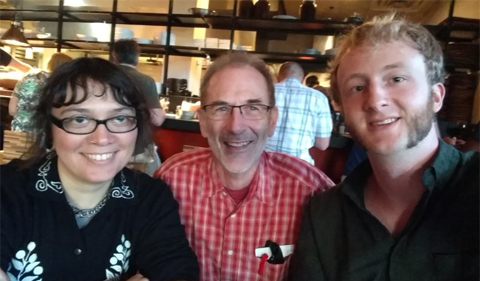Dr. Glenn Matlack, Associate Professor of Environmental & Plant Biology, and two graduate students, Dr. Marion Holmes (’18 Ph.D. in Plant Biology) and Jack Monsted, presented three research papers at the 2018 Ecological Society of America annual meeting, Aug. 4 to 10 in New Orleans.
- “Evolution of spatial structure in regrowth forests of southeastern Ohio since 1900” (Monsted and Matlack)
- “Forest history and life history traits determine distribution of herb species in regrowth forests of southeastern Ohio” (Monsted and Matlack)
- “Population and community dynamics of non-native species in an 80-year post-agricultural forest chronosequence” (Holmes and Matlack)
These papers describe the long-term history of human land use and its effect on the modern forest flora.
Forests of the Athens area have regenerated recently after almost-complete clearance for agriculture in the 19th century. Now the areas has about 70 percent forest cover (up from 10 percent in 1900) in a mosaic of stand ages. Modern forest is disproportionately located on slopes; relatively little occurs on agriculturally valuable flood plains. Because forest herb species are dispersal-limited and accumulate slowly through time, the greatest diversity is found in a relatively small number of long-established forest stands. Forest herbs arrive randomly in young forest but sort themselves into distinct microsites with the passage of time. Invasive plant species fade out of the forest flora as successional time passes but can quickly re-appear if a local area is disturbed.




















Comments